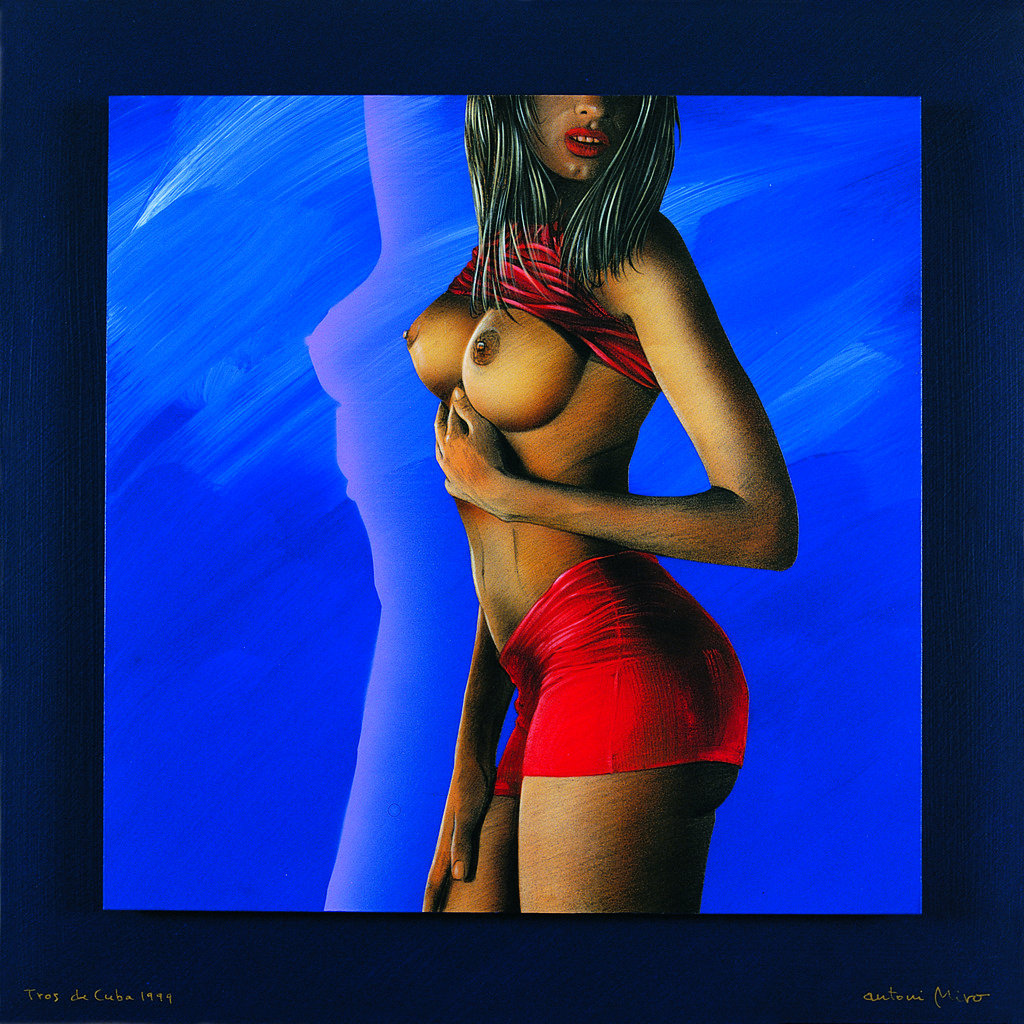Tros de Cuba (A piece of Cuba)
Eroticism plays a very important role in Antoni Miró’s artistic career and this work is a case in point. It forms part of the “Some Nudes” sub-set of the “Vivace” series that was undertaken as the twentieth century drew to a close. As Blasco Carrascosa pointed out, “there is a natural and playful understanding of pleasure”. In this case, the artist’s gaze is drawn to the beautiful half-naked body of a woman in Havana. Standing on her own, her flimsy red clothes, the deep blue of the background, and the white defining the shades evoke the colours of the Cuban flag.
Again, Miró condenses the power of a greater entity in a smaller part: the woman not only has a beautiful body but she also enshrines the sensuality of Cuba. She is an object of desire and occupies a vertical strip that is slightly off centre, to be sieged by sights. The woman is framed in such a way that her eyes are hidden, letting us focus on the bits the artist is really interested in.
The black border is also part of the piece, which cannot be interrupted in its essentiality by a framed boundary. The picture is rather like a slide, which enhances the importance given by the artist to framing. In many of Miró’s works, we see the kind of cropping common in films and photography, in which only parts of figures are shown, as they are, even though that fragment is often enough to reveal what is going on.
The figure of the woman is inextricably linked to her shadow. It is precisely the interplay between the two that really focuses on the width of the board. The flat white profile redefining her voluptuousness plays a key role as well. These touches enhance the onirism of the work, giving the woman’s half-naked body a magical quality.
The pictorial treatment reflects some drawing techniques. The modelling of the volumes not only employs gradual darkening of the colours but also resorts to an overlapping scratching whose textures provide an orientation that makes the figuration less realistic and more idealistic. The same applies to the lighting of the hair, which is strongly contrasted, with white strokes applied over a generally black tone.
Nevertheless, as usual in his works, this does not prevent Miró from minutely depicting some details that might have been omitted — for example, the seams of the culotte. The idea of conceptual contrast is present in many of his paintings — visible here in the kinds and degrees of detail in the picture.
Santiago Pastor Vila
